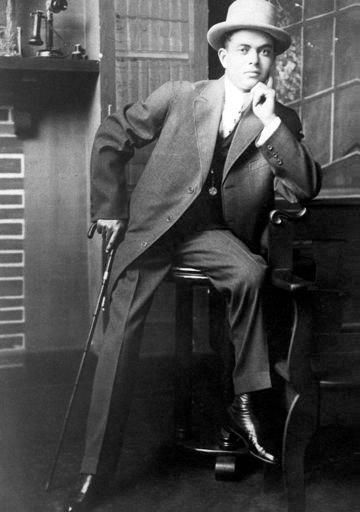The history of every city contains chapters many would like to forget. In the aftermath of a brutal crime in the summer of 1919, an innocent man may have been put to death.
“I am to die to satisfy a few Republican politicians,” Maurice Mays, Negro murderer of East Tennessee, declared to a group of friends gathered in the death house at the state penitentiary last night, a few hours before he was to go to the electric chair at sunrise Wednesday morning to pay for the murder of Mrs. Bertie Lindsey in Knoxville August 30, 1919.
“Have hope, Maurice,” a friend had said, intimating that [a] last-minute stay might come from Gov. Taylor. “I have hope,” Mays replied sarcastically, adding, “of sitting in that chair over there,” pointing to the curtain which hides the instrument of death. “The governor,” he continued, “hasn’t man enough in him. You might as well talk to a rock. Some Republicans told him he’d lose 20,000 votes if he helped me.” (From The Tennesseean, March 15, 1922)
Some of the darkest days in Knoxville’s history occurred 100 years ago, beginning with the murder on Aug. 30 of Bertie Lindsey, a 27-year-old white woman. Lindsey was shot and killed in her bed after being aroused from sleep by an intruder holding a flashlight and brandishing a pistol.
Ora Smyth, Lindsey’s 20-year-old cousin, was staying with Lindsey. Smyth said she woke around 2:30 a.m. to the sound of Lindsey calling her name. Terrified, she opened her eyes to see the intruder telling Lindsey to “sit back” in her bed. According to Smyth, Lindsey rose three times before stepping out of the bed and rushing for the bedroom door. The intruder fired once hitting Lindsey in the back and Lindsey collapsed to the floor.
The man then touched Smyth on her “private part” and spoke some “vulgar words” but fled when Smyth convinced him to take Lindsey’s purse and leave. Smyth ran to a neighboring home to summon help and police were notified.
Knoxville police officer Andy White was riding in the paddy wagon a few blocks east of the Lindsey home when he heard of the murder. White told driver Jim Smith: “I’ll bet that damned Maurice Mays killed that woman.”
White repeated the accusation to the commanding officer at the crime scene and then accompanied other officers to Mays’ Humes Street home and arrested him. White sniffed a pistol found there but didn’t detect an odor which would have indicated the gun had been fired recently. Mays denied owning other guns and a search failed to find any.
White’s hatred for Mays was well-known. It was thought to have begun a few years earlier when Mays owned an establishment called “Stroller’s Café.” Mays allegedly interfered with White’s attempt to arrest some of his patrons.

Alfred Taylor served as governor of Tennessee from 1921 to 1923. Photographer unknown
The police next took Mays to the corner of Eighth Avenue and Gillespie Street and stood him under an arc light. Officer White brought Smyth to the location where she identified Mays as the man who killed her cousin.
The headline in the next morning’s “Journal and Tribune” read: “BLOODY RIOTS FOLLOW ATTACK ON JAIL; FIVE KNOWN DEAD; MANY ARE WOUNDED.”
Mobs of white protesters destroyed the county jail in their attempt to get Mays out of police custody. Fortunately, police had surreptitiously moved their prisoner – disguised as a woman – to Chattanooga earlier. The National Guard employed machine guns before the rioting and looting ended.
Following a four-day trial in October 1919, Mays was convicted of murder. The jury deliberated for eight minutes and the judge imposed a death sentence.
The conviction was reversed on appeal because a recent change in state statutes required the jury, not the judge, to impose the sentence. Mays was tried a second time, and on April 23, 1921, a jury deliberated 30 minutes before finding him guilty and setting the punishment as death in the electric chair.
The execution was scheduled for mid-December 1921, but Gov. Alfred Taylor granted the prisoner a 90-day stay until March 15, 1922. Taylor cited a flood of letters from distinguished citizens “white and black” in deciding to grant additional time for exculpatory evidence to be presented, but none came before the court.
There remain serious reasons to doubt Mays’ guilt: perjury by police regarding Mays’ pistol (officer Jim Smith swore there was “not a hint” of odor on Mayes’ pistol); misidentification by Smyth (a neighbor described a “heavy large” a man leaving the crime scene and Mays stood 5 feet 8 inches tall and weighed 127 pounds); lack of a clear motive for Mays to commit the crime. Mays was no angel, but neither did he have a reputation for assaulting women.
Mays went to his death proclaiming his innocence, quite possibly another of the thousands of blacks who died in the name of Southern justice.
Larry Van Guilder is the business/government editor for KnoxTNToday.

